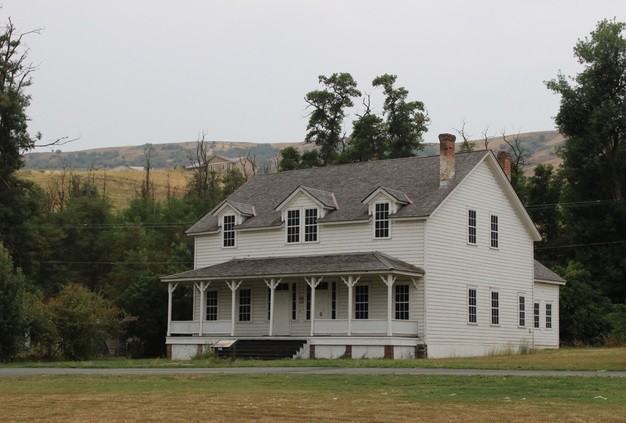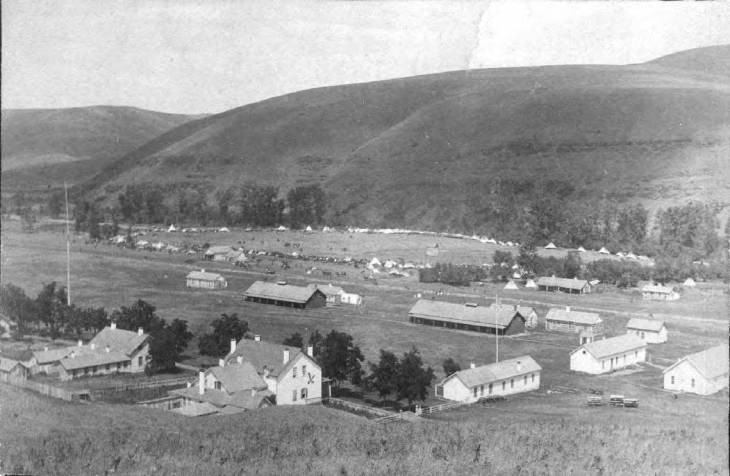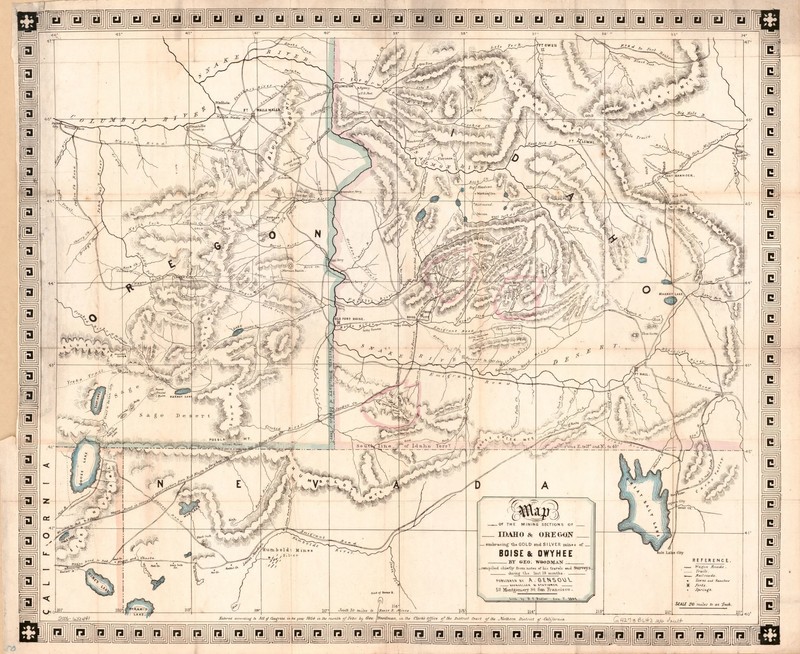Fort Lapwai
Introduction
Text-to-speech Audio
In the 1860s, tension rose between the Nez Perce and white settlers encroaching on their territory in search of gold. In response, the United States constructed Fort Lapwai in the winter of 1862-1863 to prevent hostilities between whites and the Nez Perce. The fort was abandoned briefly several times following the Civil War, but gained new importance during the Nez Perce War of 1876. The fort was eventually abandoned permanently in 1884. The officers' quarters remain today in Lapwai, Idaho and are administered by the National Park Service from nearby Nez Perce National Historical Park.
Images
Fort Lapwai's Officers' Quarters, one of the only remaining structures from the post

Fort Lapwai, pictured here in 1884

1864 mining map of Idaho and Oregon; Ft. Lapwai is noted as a "U.S. Post" to the southeast of Lewiston, Idaho

Backstory and Context
Text-to-speech Audio
The Nez Perce (or Nimiipuu) people inhabited the Clearwater, Snake, and Salmon River Valleys for centuries. In the mid-19th century, however, white settlers began to move into the region attracted by rich farmland. Oregon Territory was created in 1848 and Washington Territory in 1853. In 1855, Oregon's territorial governor Isaac I. Stevens managed to secure a treaty with the Nez Perce and several other Indian tribes. Reluctantly, the Nez Perce and other agreed to cede 7.5 million acres to the United States, while retaining 5 million acres of land for their own reservation.
In the year 1860, as Civil War loomed on the horizon, gold was discovered within the boundaries of the Nez Perce reservation. Between 10,000 and 15,000 miners flooded the region, illegally mining and squatting on Nez Perce lands. Tensions rose, especially following the murder of two white men by the Nez Perce. In order to keep the peace, Brigadier General Benjamin Alford ordered the construction of a military post along the Lapwai River, just a few miles from the confluence of the Clearwater and Snake Rivers. The post, twelve miles from Lewiston, was named Fort Lapwai. In Nez Perce, "lapwai" means "place of the butterflies."[2]
The post was built by two companies of the First Washington Infantry and First Oregon Cavalry throughout the winter of 1862-1863. In 1863, the United States government forced a new treaty upon the Nez Perce, reducing the size of their reservation to 750,000 acres. The fort was occupied until May 1866, when it was abandoned, only to be reoccupied in November; the withdrawal was largely due to the mustering out of thousands of Civil War volunteers and a subsequent shortage of men. It was abandoned again from July to November, 1867.
The fort played an important during the Nez Perce War of 1876, when General Oliver Otis Howard issued an ultimatum at Fort Lapwai to Chief Joseph and other Nez Perce to relinquish their remaining reservation in Oregon. The Nez Perce refused, resulting in conflict. The fort served as military headquarters during parts of the conflict, and housed Nez Perce prisoners. Chief Joseph was famously forced to surrender in October 1877, vowing "I will fight no more forever."
Fort Lapwai continued to be garrisoned until 1884. The post grew over time and held barracks, stables, warehouses, offices, officers' quarters, and more. Only a few buildings from Fort Lapwai remain today, most notably the officer's duplex that was built in 1883. The National Park Service, via the Nez Perce National Historical Park, maintains the officer's quarters, and an interpretive marker stands to its front.
Cite This Entry
Cowsert, Zachery and Robert Catherman. "Fort Lapwai." Clio: Your Guide to History. April 6, 2024. Accessed February 13, 2025. https://theclio.com/entry/117827
Sources
1. Aurora Hunt. The Army of the Pacific. Glendale, CA: Arthur H. Clark Company, 1951.
2. Robert W. Frazier. Forts of the West. Norman: University of Oklahoma Press, 1965.
3. Robert M. Utley. Frontiersmen in Blue: The United States Army and the Indian, 1848-1865. New York: Macmillian Company, 1967.
4. "Fort Lapwei History." December 27, 2017. Nez Perce National Historic Park. National Park Service. Web. Accessed October 27, 2020. https://www.nps.gov/nepe/learn/historyculture/fort-lapwai-history.htm
5. Anne L. Marshall. "Fort Lapwai Officers' Quarters." Archipedia. Society of Architectural Historians. Web. Accessed October 27, 2020. https://sah-archipedia.org/buildings/ID-01-069-0017
Anne L. Marshall, Society of Architectural Historians: https://sah-archipedia.org/buildings/ID-01-069-0017
"Fort Lapwai," Washington State University: https://content.libraries.wsu.edu/digital/collection/npsnezperce/id/3680/
U.S. Library of Congress: https://www.loc.gov/resource/g4273b.ct007727/?r=0.407,0.091,0.09,0.071,0

